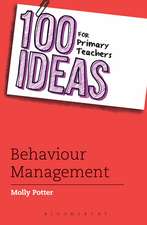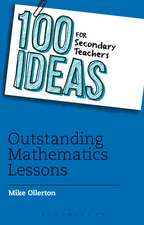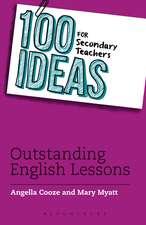Young Activists: American High School Students in the Age of Protest
Autor Gael Grahamen Limba Engleză Hardback – 5 feb 2006
The traumas and controversies of the 1960s—the civil rights movement, the Vietnam War, and the pervasive antiauthoritarian spirit so evident on college campuses—infiltrated American public high schools. Students challenging their relegation to the world of children demanded the right to express their political views and to have a voice in decisions about their education. Adopting the activist tactics of the times, they organized strikes and demonstrations, initiated petitions and boycotts, and sought recourse through lawsuits and occasional violence.
As racial tensions flared across the country, high schools became a crucial arena for the civil rights movement. Drawing upon the memories of students and teachers as well as education journals, court cases, and news magazines, Young Activists provides an insider’s look at desegregation in all regions of the country, with a candid discussion of Black and Brown Power militancy and the reaction of white students. Debates about the war in Vietnam also rattled the high schools as young men and women—potential draftees and their colleagues—clashed over their judgments of American policy. In addition to these large social issues, student activists had their own specific agendas: relaxing dress codes, taking part in school governance, and initiating changes to the curriculum.
School authorities responded, warily but often positively. By the time activism waned in the mid-1970s, students had succeeded in making their high schools more open, more democratic, and more in tune with the times. Graham demonstrates that, although teenagers were indisputably influenced by the events reshaping the wider world, they were neither pawns nor mere mimics of their elders. Rather, they drew upon the rhetoric and strategies available to them in the 1960s to promote their own interests.
As racial tensions flared across the country, high schools became a crucial arena for the civil rights movement. Drawing upon the memories of students and teachers as well as education journals, court cases, and news magazines, Young Activists provides an insider’s look at desegregation in all regions of the country, with a candid discussion of Black and Brown Power militancy and the reaction of white students. Debates about the war in Vietnam also rattled the high schools as young men and women—potential draftees and their colleagues—clashed over their judgments of American policy. In addition to these large social issues, student activists had their own specific agendas: relaxing dress codes, taking part in school governance, and initiating changes to the curriculum.
School authorities responded, warily but often positively. By the time activism waned in the mid-1970s, students had succeeded in making their high schools more open, more democratic, and more in tune with the times. Graham demonstrates that, although teenagers were indisputably influenced by the events reshaping the wider world, they were neither pawns nor mere mimics of their elders. Rather, they drew upon the rhetoric and strategies available to them in the 1960s to promote their own interests.
Preț: 167.85 lei
Nou
Puncte Express: 252
Preț estimativ în valută:
32.12€ • 33.35$ • 26.78£
32.12€ • 33.35$ • 26.78£
Carte disponibilă
Livrare economică 01-15 martie
Preluare comenzi: 021 569.72.76
Specificații
ISBN-13: 9780875803517
ISBN-10: 0875803512
Pagini: 270
Dimensiuni: 152 x 229 x 25 mm
Greutate: 0.57 kg
Ediția:1
Editura: Northern Illinois University Press
Colecția Northern Illinois University Press
ISBN-10: 0875803512
Pagini: 270
Dimensiuni: 152 x 229 x 25 mm
Greutate: 0.57 kg
Ediția:1
Editura: Northern Illinois University Press
Colecția Northern Illinois University Press
Recenzii
"Provides evidence that the culture wars of the 1960s ran deep into American society. Graham provides a solid foundation for future scholars to build on with more regional or local studies."—American Historical Review
"A valuable contribution to the fields of youth culture and education."—Journal of Social History
"Graham has done an outstanding job at bringing this little-known chapter of American history to light. Young Activists is an extremely valuable addition to the study of childhood, education, and youth activism in 1960s America."—Register of the Kentucky Historical Society
"A valuable contribution to the fields of youth culture and education."—Journal of Social History
"Graham has done an outstanding job at bringing this little-known chapter of American history to light. Young Activists is an extremely valuable addition to the study of childhood, education, and youth activism in 1960s America."—Register of the Kentucky Historical Society
Notă biografică
Gael Graham is Associate Professor of History and the Director of the History Graduate Program at Western Carolina University.
Todd Gitlin offers a foreword that will rouse the reader’s appetite for the stimulating account that follows.
Cuprins
Table of Contents
Foreword by Todd Gitlin
Introduction—The Diverse Origins of Student Activism and Dissent
1—The Changing World of the American High School Student
2—Maintaining the Color Line in Desegregated High Schools
3—It's Not Personal. It's Just That You're White—Black and Brown Power in the High Schools
4—The High School Student Rights Movement
5—Student Rights, Student Power, and the Critique of Contemporary Education
6—High School Students, the Vietnam War, and Radical Politics
7—Cops in the Halls, Students on the School Board—Educators Respond to High School Turmoil
Epilogue
Notes
Selected Bibliography
Index
Introduction—The Diverse Origins of Student Activism and Dissent
1—The Changing World of the American High School Student
2—Maintaining the Color Line in Desegregated High Schools
3—It's Not Personal. It's Just That You're White—Black and Brown Power in the High Schools
4—The High School Student Rights Movement
5—Student Rights, Student Power, and the Critique of Contemporary Education
6—High School Students, the Vietnam War, and Radical Politics
7—Cops in the Halls, Students on the School Board—Educators Respond to High School Turmoil
Epilogue
Notes
Selected Bibliography
Index
Descriere
The traumas and controversies of the 1960s—the civil rights movement, the Vietnam War, and the pervasive antiauthoritarian spirit so evident on college campuses—infiltrated American public high schools. Students challenging their relegation to the world of children demanded the right to express their political views and to have a voice in decisions about their education. Adopting the activist tactics of the times, they organized strikes and demonstrations, initiated petitions and boycotts, and sought recourse through lawsuits and occasional violence.
As racial tensions flared across the country, high schools became a crucial arena for the civil rights movement. Drawing upon the memories of students and teachers as well as education journals, court cases, and news magazines, Young Activists provides an insider’s look at desegregation in all regions of the country, with a candid discussion of Black and Brown Power militancy and the reaction of white students. Debates about the war in Vietnam also rattled the high schools as young men and women—potential draftees and their colleagues—clashed over their judgments of American policy. In addition to these large social issues, student activists had their own specific agendas: relaxing dress codes, taking part in school governance, and initiating changes to the curriculum.
School authorities responded, warily but often positively. By the time activism waned in the mid-1970s, students had succeeded in making their high schools more open, more democratic, and more in tune with the times. Graham demonstrates that, although teenagers were indisputably influenced by the events reshaping the wider world, they were neither pawns nor mere mimics of their elders. Rather, they drew upon the rhetoric and strategies available to them in the 1960s to promote their own interests.
As racial tensions flared across the country, high schools became a crucial arena for the civil rights movement. Drawing upon the memories of students and teachers as well as education journals, court cases, and news magazines, Young Activists provides an insider’s look at desegregation in all regions of the country, with a candid discussion of Black and Brown Power militancy and the reaction of white students. Debates about the war in Vietnam also rattled the high schools as young men and women—potential draftees and their colleagues—clashed over their judgments of American policy. In addition to these large social issues, student activists had their own specific agendas: relaxing dress codes, taking part in school governance, and initiating changes to the curriculum.
School authorities responded, warily but often positively. By the time activism waned in the mid-1970s, students had succeeded in making their high schools more open, more democratic, and more in tune with the times. Graham demonstrates that, although teenagers were indisputably influenced by the events reshaping the wider world, they were neither pawns nor mere mimics of their elders. Rather, they drew upon the rhetoric and strategies available to them in the 1960s to promote their own interests.















